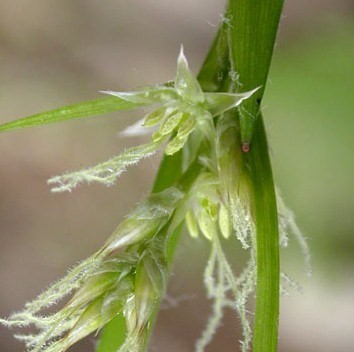Pacific woodrush
(Luzula comosa)

Description
Luzula comosa is a species of flowering plant in the rush family known by the common name Pacific woodrush. It is native to western North America from Alaska to California to Colorado, where it can be found in moist spots in forests and meadows and many other types of habitat. It is a perennial herb quite variable in appearance, often forming small, narrow grasslike tufts. The erect inflorescence is tipped with a series of clustered spikelike flowers. The dark brown perianth parts open to reveal 6 stamens tipped with large anthers. Luzula is a genus of flowering plants in the rush family Juncaceae. The genus has a cosmopolitan distribution, with species occurring throughout the world, especially in temperate regions, the Arctic, and higher elevation areas in the tropics. Plants of the genus are known commonly as wood-rush, wood rush, or woodrush. Possible origins of the genus name include the Italian lucciola ("to shine, sparkle") or the Latin luzulae or luxulae, from lux ("light"), inspired by the way the plants sparkle when wet with dew. Another etymology sometimes given is that it does derive from lucciola but that this meant a mid-summer field, or from the Latin luculus, meaning a small place; the same source also states that this name was applied by Luigi Anguillara (an Italian botanist) in 1561. These rushes are usually perennial plants with rhizomes and sometimes stolons. They generally form clumps of cylindrical stems and narrow leaves with hair-lined edges. The inflorescence is often a dense cluster of flowers with two leaf-like bracts at the base, or sometimes a solitary flower or a few flowers borne together. They have six brownish tepals. Luzula species are used as food plants by the larvae of some Lepidoptera species, including the smoky wainscot. Several moths of the genus Coleophora have been observed on the plants. Coleophora biforis and C. otidipennella feed exclusively on Luzula. C. antennariella is limited to Luzula pilosa, and C. sylvaticella feeds only on L. sylvatica. Some species, notably Luzula sylvatica and its cultivars, are used as ornamental garden plants.
Taxonomic tree:







